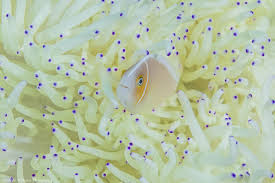Jasmine tea, known as Trà Nhài tươi in Vietnamese, is a delicate, aromatic tea infused with the natural fragrance of jasmine flowers. With its soothing floral scent and smooth taste, fresh jasmine tea has been enjoyed for centuries as a symbol of elegance, relaxation, and good health.

Unlike traditional jasmine tea, which often uses dried flowers or artificially added scents, fresh jasmine tea is crafted from newly harvested jasmine blossoms, ensuring an authentic, natural aroma that enhances the tea’s delicate flavors.
In this article, we will explore:
✔ The origins and history of jasmine tea
✔ How fresh jasmine tea is made
✔ The health benefits of drinking jasmine tea
✔ How to brew fresh jasmine tea for the best taste
Let’s dive into the world of fresh jasmine tea and discover why it is one of the most beloved floral teas worldwide.
1. The Origins and History of Jasmine Tea
🌿 Where Did Jasmine Tea Originate?
Jasmine tea traces its origins back to China during the Song Dynasty (960–1279 AD). It was first crafted by infusing green tea leaves with jasmine blossoms, a technique that quickly became popular due to its delightful aroma and calming effects.
Over the centuries, jasmine tea spread to other parts of Asia, including Vietnam, Japan, and Taiwan, where each region developed its own variations of the tea. Today, Vietnamese fresh jasmine tea is highly sought after for its authentic floral scent and smooth, well-balanced taste.
🌼 Symbolism and Cultural Importance
- In China: Jasmine tea symbolizes purity, elegance, and hospitality.
- In Vietnam: It is commonly served during tea ceremonies and special occasions.
- In Japan: Jasmine tea is considered a stress-relieving beverage, perfect for relaxation.
Jasmine tea has remained a beloved beverage for centuries, not only for its refreshing taste but also for its therapeutic benefits.
2. How Fresh Jasmine Tea Is Made
The production of fresh jasmine tea requires careful craftsmanship to preserve both the tea’s delicate flavors and the jasmine’s natural fragrance.
🍃 Step-by-Step Process of Making Fresh Jasmine Tea
Step 1: Selecting High-Quality Tea Leaves
- Traditionally, green tea leaves are used as the base.
- Some variations use white tea or oolong tea for a smoother taste.
Step 2: Harvesting Fresh Jasmine Flowers
- Jasmine flowers are picked at night, when their fragrance is at its peak.
- Only fully bloomed flowers are selected for the best aroma.
Step 3: Infusing the Tea with Jasmine Flowers
- Fresh jasmine flowers are layered with tea leaves in a temperature-controlled environment.
- Over 24–48 hours, the tea naturally absorbs the floral scent.
- The process is repeated several times for a richer aroma.
Step 4: Gentle Drying and Packaging
- The tea is lightly dried to retain its freshness.
- The final product is fragrant, smooth, and refreshing.
Fresh jasmine tea offers a natural, floral experience that is both soothing and invigorating.
3. The Unique Taste and Aroma of Fresh Jasmine Tea
🍵 What Does Fresh Jasmine Tea Taste Like?
✔ Aroma: Sweet, floral, and calming
✔ Flavor: Smooth, slightly sweet, with a hint of freshness
✔ Aftertaste: Clean, refreshing, and slightly lingering
Compared to traditional jasmine tea, fresh jasmine tea has a more vibrant and natural scent, as it is made from freshly picked jasmine flowers rather than dried or artificially scented ones.
4. Health Benefits of Drinking Fresh Jasmine Tea
Jasmine tea is not just delicious—it also provides numerous health benefits, making it a great addition to a healthy lifestyle.
🩺 Top Health Benefits of Fresh Jasmine Tea
✔ Promotes Relaxation and Reduces Stress
- The natural aroma of jasmine has been shown to reduce anxiety and promote relaxation.
- Drinking fresh jasmine tea can help calm the mind and improve sleep quality.
✔ Supports Heart Health
- Jasmine tea contains antioxidants that help lower bad cholesterol.
- Regular consumption reduces the risk of heart disease and high blood pressure.
✔ Boosts Metabolism and Aids Weight Loss
- Jasmine tea helps increase fat burning and boost metabolism.
- Drinking a cup before meals can aid digestion and promote weight management.
✔ Improves Skin Health and Fights Aging
- Rich in polyphenols and antioxidants, jasmine tea helps fight free radicals.
- It reduces signs of aging and keeps the skin glowing and youthful.
✔ Enhances Mental Alertness
- Contains a moderate amount of caffeine, which improves focus and concentration.
- Unlike coffee, jasmine tea provides a gentle energy boost without jitters.
By drinking fresh jasmine tea daily, you can enjoy its refreshing taste while benefiting from its natural healing properties.
5. How to Brew Fresh Jasmine Tea for the Best Taste
To fully enjoy the delicate flavors of fresh jasmine tea, proper brewing techniques are essential.
🫖 Step-by-Step Brewing Guide
1️⃣ Use High-Quality Water
- Filtered or spring water enhances the tea’s natural taste.
2️⃣ Water Temperature: 75–85°C (167–185°F)
- Using boiling water can destroy the delicate floral notes.
3️⃣ Tea-to-Water Ratio:
- 3–5 grams of tea per 200ml of water.
4️⃣ Steeping Time:
- First infusion: 2–3 minutes for a mild taste.
- Second and third infusions: Increase steeping time by 30 seconds.
5️⃣ Use a Glass or Porcelain Teapot
- Helps retain the tea’s delicate aroma and floral essence.
💡 Tip: Fresh jasmine tea can be steeped multiple times, with each infusion revealing new layers of floral complexity.
6. Conclusion: A Perfect Blend of Nature and Tradition
Fresh jasmine tea is more than just a beverage—it is an experience of aroma, taste, and relaxation. With its natural fragrance, soothing properties, and health benefits, it remains a favorite choice among tea lovers worldwide.
By choosing fresh jasmine tea, you can enjoy a more vibrant and authentic floral taste, free from artificial scents. Whether you drink it for relaxation, health benefits, or pure enjoyment, this tea offers a delightful way to connect with nature.
So, why not brew yourself a cup of fresh jasmine tea today and immerse yourself in its natural, calming fragrance? 🍵🌿
Leave a Reply